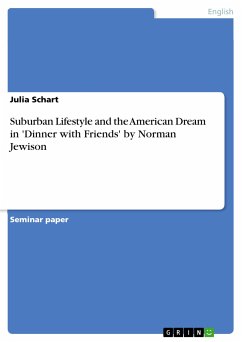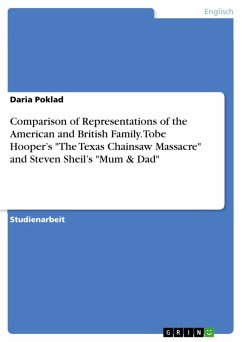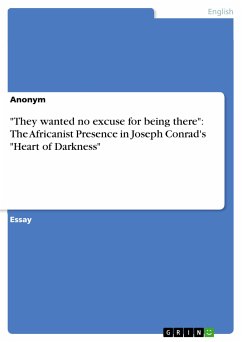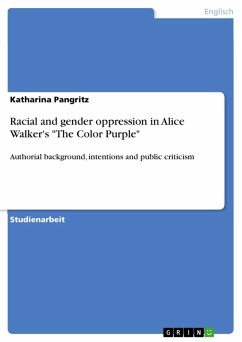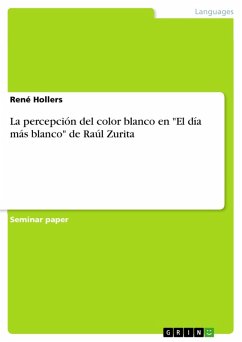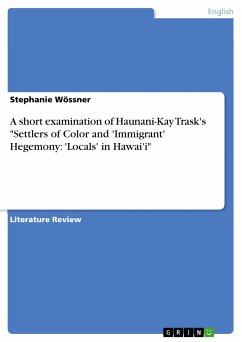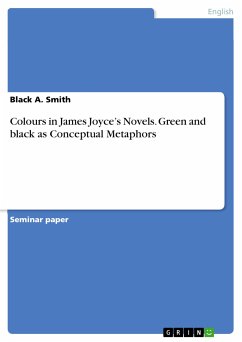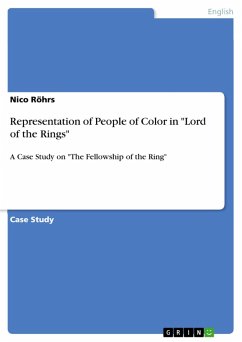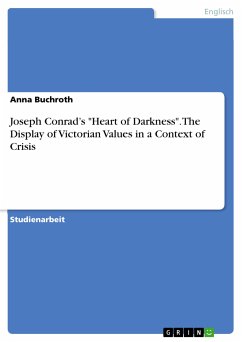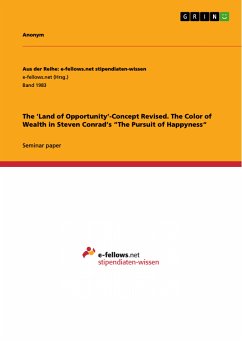
The 'Land of Opportunity'-Concept Revised. The Color of Wealth in Steven Conrad's "The Pursuit of Happyness" (eBook, PDF)
Sofort per Download lieferbar
Statt: 15,95 €**
5,99 €
inkl. MwSt. und vom Verlag festgesetzt.
**Preis der gedruckten Ausgabe (Broschiertes Buch)
Weitere Ausgaben:

PAYBACK Punkte
0 °P sammeln!
Seminar paper from the year 2014 in the subject American Studies - Miscellaneous, grade: 2, University of Passau, language: English, abstract: Beginning by outlining the basic development of the 'land of opportunity'-concept through massive immigration from Europe in the 19th and 20th century, I will continue to show why even back then there have been quite a few contradictions between the new nation's ideals and the reality that people, especially blacks, experienced in those days, implying that opportunity was only available to a very limited amount of people. The Civil Rights Movement in th...
Seminar paper from the year 2014 in the subject American Studies - Miscellaneous, grade: 2, University of Passau, language: English, abstract: Beginning by outlining the basic development of the 'land of opportunity'-concept through massive immigration from Europe in the 19th and 20th century, I will continue to show why even back then there have been quite a few contradictions between the new nation's ideals and the reality that people, especially blacks, experienced in those days, implying that opportunity was only available to a very limited amount of people. The Civil Rights Movement in the 1960s was merely able to raise society's awareness of the problem because afterwards most people simply kept on believing the lie of living in the 'land of the free'. Education, housing and income continued to differ widely between blacks and whites, causing not only resentment and poverty on one side, but also leading to pseudo- scientific attempts to explain those differences based on racial characteristics. Analyzing 'The Pursuit Of Happyness' I will try to show the ambiguity of criticism of racial differences and America's ruthless individualism on the one hand, and of promotion of the traditional American Dream concept on the other. Following the question, if the movie is as critical and sarcastic as the title suggests, I will then try to point out some of the major symbols and metaphors used to enhance the contrast between rich and poor and black and white in the movie, also explaining why Chris Gardner could be seen as an American Adam. Finally, I will try to give a short overview of racial inequality today, connecting it to my movie analysis in order to answer the question whether 'The Pursuit of Happyness' manages to portray an adequate picture of the contemporary perception of the 'land of opportunity'-concept: Is money still a matter of color?
Dieser Download kann aus rechtlichen Gründen nur mit Rechnungsadresse in A, B, BG, CY, CZ, D, DK, EW, E, FIN, F, GR, HR, H, IRL, I, LT, L, LR, M, NL, PL, P, R, S, SLO, SK ausgeliefert werden.




